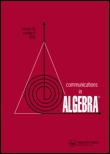
COMMUNICATIONS IN ALGEBRA
Scope & Guideline
Innovating Algebra: Where Theory Meets Practice.
Introduction
Aims and Scopes
- Algebraic Structures and Their Properties:
Exploration of various algebraic structures such as rings, groups, modules, and algebras, with a focus on their intrinsic properties and interrelations. - Homological Algebra:
Investigation into the relationships between algebraic structures through homological methods, including derived categories, Ext and Tor functors, and projectivity. - Representation Theory:
Study of representations of algebraic structures, particularly finite groups and Lie algebras, and their implications for character theory and module theory. - Noncommutative Algebra:
Research on noncommutative rings, algebras, and their applications, including quantum groups and their representations. - Geometric Aspects of Algebra:
Examination of the interplay between algebra and geometry, especially through the lens of algebraic varieties and schemes. - Applications of Algebraic Concepts:
Utilization of algebraic structures in various mathematical and scientific contexts, including applications in coding theory, combinatorics, and mathematical physics.
Trending and Emerging
- Derived Categories and Triangulated Structures:
There is a marked increase in papers exploring derived categories, triangulated categories, and their applications in algebra, reflecting a growing interest in homological methods. - Noncommutative Geometry and Algebra:
Emerging research in noncommutative geometry and its connections to algebraic structures suggests a burgeoning field that integrates geometric insights with algebraic frameworks. - Algebraic Groups and Their Representations:
A resurgence in studies related to algebraic groups, particularly their representation theory, indicates a renewed interest in the intersection of algebra and geometry. - Computational Algebra:
The rise of computational methods in algebra, including algorithmic approaches to problems in algebraic structures, has become increasingly prominent in recent publications. - Applications to Physics and Other Sciences:
There is a growing trend towards applying algebraic concepts to problems in mathematical physics and other scientific domains, reflecting the interdisciplinary nature of modern algebra.
Declining or Waning
- Classical Group Theory:
Publications focused on classical groups and their properties have decreased, possibly indicating a shift towards more abstract algebraic structures or computational aspects. - Elementary Number Theory:
Research pertaining to elementary number theory within algebra has become less prominent, as the journal gravitates towards more complex algebraic structures and applications. - Traditional Ring Theory:
While ring theory remains a core focus, the exploration of traditional areas such as commutative ring theory has seen a decline, with more emphasis on noncommutative and derived aspects.
Similar Journals
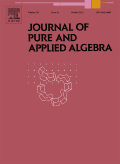
JOURNAL OF PURE AND APPLIED ALGEBRA
Connecting Theoretical Insights with Practical ApplicationsJOURNAL OF PURE AND APPLIED ALGEBRA, published by Elsevier, stands as a premier academic platform in the fields of algebra and number theory, boasting a distinguished impact factor that reflects its rigorous peer-review process and influential research contributions. Established in 1971 and continuing its impressive trajectory until 2025, this journal has carved a niche for itself by providing a forum for innovative studies, theoretical advancements, and practical applications within pure and applied algebra. With its prestigious Q1 ranking in Algebra and Number Theory, the journal not only ranks among the top tier in its category but also offers an extensive collection of research that caters to mathematicians, academicians, and students alike. Scholars will find it an invaluable resource for disseminating their findings, as well as keeping abreast of significant developments in the field, further solidifying its role as a cornerstone of mathematical research.
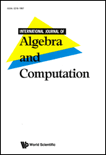
INTERNATIONAL JOURNAL OF ALGEBRA AND COMPUTATION
Bridging Theory and Application in Algebraic ComputationThe INTERNATIONAL JOURNAL OF ALGEBRA AND COMPUTATION, published by WORLD SCIENTIFIC PUBL CO PTE LTD, is a prominent platform in the field of mathematics, specifically focusing on algebraic structures and computational methods. With a publication history dating back to 1996 and converging to 2024, this journal has established a significant presence within the academic community, as reflected in its Q2 category ranking in Mathematics and its position in the Scopus 45th percentile for General Mathematics. Although it does not offer Open Access, researchers can access a wealth of original research articles, comprehensive reviews, and groundbreaking findings that contribute to the advancement of mathematical theory and its applications. This journal not only serves as an invaluable resource for mathematicians but also encourages interdisciplinary research by appealing to professionals and students alike who seek to deepen their understanding of algebra and computation methodologies.

SIAM Journal on Applied Algebra and Geometry
Innovating Solutions with Algebraic and Geometric InsightsSIAM Journal on Applied Algebra and Geometry, published by SIAM Publications, is a premier academic journal that occupies a vital space in the fields of Algebra, Geometry, and Applied Mathematics. With an impressive impact factor reflected in its Q1 category rankings in 2023 across key mathematical disciplines such as Algebra and Number Theory, as well as Geometry and Topology, this journal is positioned among the highest echelons of mathematical research. Since its inception in 2017, it has become a crucial source for advanced studies and applied techniques that harness algebraic and geometric methods, catering to both theoretical insights and practical applications. Researchers, professionals, and students alike benefit from its rigorous peer-reviewed articles that explore contemporary challenges and developments in mathematics. While Open Access options are currently not available, the journal remains dedicated to fostering innovation and knowledge dissemination within the scientific community, thus ensuring significant contributions to the advancement of the mathematical sciences.
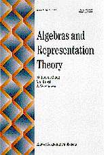
ALGEBRAS AND REPRESENTATION THEORY
Exploring the Depths of Mathematical InnovationALGEBRAS AND REPRESENTATION THEORY, published by SPRINGER, is a premier journal that focuses on the cutting-edge developments in the field of algebra and representation theory. With an ISSN of 1386-923X and an E-ISSN of 1572-9079, this journal has fostered a robust platform for both established and emerging researchers since its inception in 1998. As a Q1 journal in the Mathematics miscellaneous category for 2023, it stands out for its rigorous peer-review process and commitment to academic excellence. Although it is not an open-access journal, its broad scope includes significant theoretical advancements and applications that resonate across various mathematical disciplines. Located at VAN GODEWIJCKSTRAAT 30, 3311 GZ DORDRECHT, NETHERLANDS, ALGEBRAS AND REPRESENTATION THEORY continues to contribute meaningfully to the scientific community by providing researchers with essential insights and fostering collaboration in the increasingly complex landscape of mathematics. Researchers, professionals, and students are encouraged to engage with the latest publications, as the journal plays a critical role in shaping contemporary discussions and innovations in the study of algebraic structures.

Selecta Mathematica-New Series
Unveiling Groundbreaking Insights in Mathematics and Physics.Selecta Mathematica-New Series is a premier academic journal published by Springer International Publishing AG, based in Switzerland. With an impressive impact in the fields of Mathematics and Physics, it is recognized in the Q1 category for both Mathematics (Miscellaneous) and Physics and Astronomy (Miscellaneous) as of 2023. Established in 1995, the journal provides a platform for rigorous peer-reviewed research, facilitating the dissemination of groundbreaking findings and theoretical advancements through its converged publication years up to 2024. Researchers and scholars seeking to stay at the forefront of mathematical and physical sciences will benefit from the journal's diverse scope and high-impact articles. Although it does not operate under an open-access model, Selecta Mathematica-New Series remains a vital resource for building knowledge and fostering collaboration among professionals and students engaged in these dynamic fields. Access to its content is essential for those aiming to deepen their understanding and contribute to the ongoing dialogue within the scientific community.

Journal of Combinatorial Algebra
Elevating Research Standards in Algebra and CombinatoricsThe Journal of Combinatorial Algebra, published by the European Mathematical Society (EMS), is a pioneering open-access journal dedicated to advancing research in the fields of Algebra and Number Theory, as well as Discrete Mathematics and Combinatorics. Since its inception in 2018, the journal has been committed to promoting high-quality, rigorous research, evidenced by its 2023 scopus rankings placing it in the second quartile across both disciplines. It serves as a vital platform for academics, researchers, and students to share innovative findings, methodologies, and theoretical advancements within combinatorial algebra, facilitating collaboration and knowledge dissemination in the mathematical community. With its open access policy adopted in 2021, the journal ensures that its content is freely available to a global audience, further enriching the landscape of mathematical research. The journal's editorial board, composed of leading experts, guarantees the integrity and academic excellence of published articles, making it an essential resource for those engaged in the dynamic fields of combinatorics and algebra.
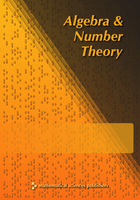
Algebra & Number Theory
Pioneering Research in Algebra and Number TheoryAlgebra & Number Theory, published by Mathematical Science Publications, stands at the forefront of mathematical research, particularly in the fields of algebra and number theory. With an ISSN of 1937-0652 and E-ISSN 1944-7833, this esteemed journal provides a dedicated platform for the dissemination of cutting-edge theoretical advances and practical applications. It has achieved a Q1 category ranking in both algebra and number theory according to the 2023 quartiles, reinforcing its critical role in shaping contemporary mathematical discourse. The journal serves as an essential resource for researchers, professionals, and students alike, offering insights into diverse mathematical methodologies and fostering open dialogue among scholars. Although it does not provide open access, its robust impact factor reflects the high quality and relevance of its published work. Based in the United States at the University of California, Berkeley, the journal's commitment to excellence continues to attract contributions that push the boundaries of mathematical understanding.
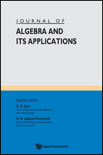
JOURNAL OF ALGEBRA AND ITS APPLICATIONS
Connecting Theory to Practice in Algebraic ResearchJOURNAL OF ALGEBRA AND ITS APPLICATIONS, published by WORLD SCIENTIFIC PUBL CO PTE LTD, stands as a pivotal resource for scholars in the fields of Algebra and Applied Mathematics. With an ISSN of 0219-4988 and E-ISSN 1793-6829, this journal has been providing a forum for the dissemination of cutting-edge research since its inception in 2008, converging towards a forward-looking timeline extending to 2024. As of 2023, it has earned a commendable Q2 ranking in both Algebra and Number Theory, as well as Applied Mathematics, reflecting its solid impact within the mathematical community. With a Scopus rank of #49/119 in Algebra and Number Theory, and #420/635 in Applied Mathematics, the journal captures significant advancements and applications across various mathematical domains. While it does not operate under an open access model, its comprehensive articles and research outputs are crucial for fostering intellectual dialogue and innovation in academia. Researchers, professionals, and students alike will find this journal an indispensable asset for their scientific pursuits and explorations into the vast field of mathematics.

RENDICONTI DEL SEMINARIO MATEMATICO DELLA UNIVERSITA DI PADOVA
Exploring the frontiers of mathematics with open access insights.RENDICONTI DEL SEMINARIO MATEMATICO DELLA UNIVERSITA DI PADOVA, published by the European Mathematical Society, stands as a notable open-access journal with a rich history in disseminating research across various domains of mathematics. With an ISSN of 0041-8994 and E-ISSN 2240-2926, this journal has embraced open access since 2023, significantly enhancing its visibility and accessibility to a global audience. Situated in Germany, its publishing house is based at Technical University Berlin, which emphasizes its academic roots and dedication to fostering mathematical research. The journal features a quartile ranking of Q3 across multiple categories including Algebra and Number Theory, Analysis, Geometry and Topology, and Mathematical Physics as of 2023, indicating a vibrant contribution to the field, despite its challenge in specific rankings. Researchers, professionals, and students alike will find in this journal a platform for innovative ideas and significant findings that are crucial to the evolution of modern mathematics.

Documenta Mathematica
Elevating Scholarly Discourse in MathematicsDocumenta Mathematica is a premier academic journal published by the European Mathematical Society (EMS), making significant contributions to the field of mathematics since its inception. With an Open Access model established in 1996, the journal ensures that scholarly works are freely available to a global audience, promoting widespread dissemination of mathematical research. Based in Germany, it serves as a vital platform for mathematicians, covering a wide array of topics within the discipline, evidenced by its impressive Q1 ranking in the miscellaneous category of mathematics as of 2023. Featuring rigorous peer-reviewed articles that span the latest trends and breakthroughs in the discipline, Documenta Mathematica also retains a commendable position among its peers with a Scopus rank of 163 out of 399, placing it in the 59th percentile for general mathematics. Researchers, professionals, and students alike will benefit from the robust scholarly content and the journal's commitment to advancing mathematical knowledge.